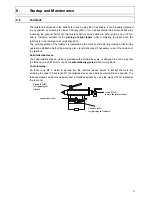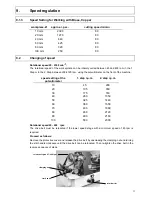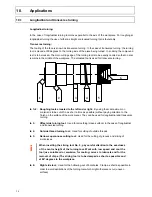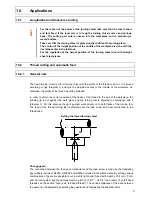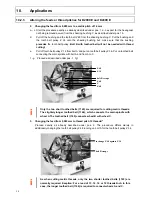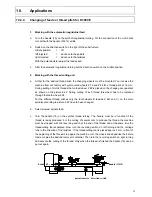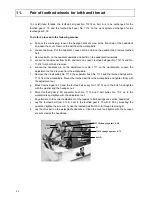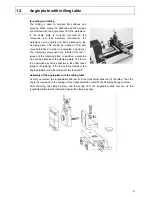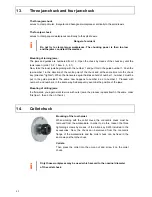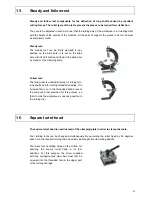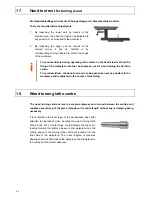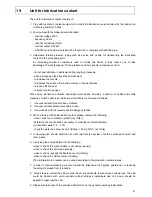
45
19
.
Unit for lubrication coolant
The unit for lubrication coolant consists of:
1. Tray with lubrication coolant sump which collects the lubrication coolant mixture for the feed pump.
Contents generally 19 litres.
2. Feed pump with the following electrical data
- nominal voltage 230 V
- frequency 50 Hz
- nominal current input 0,4A
- nominal output 0,07 kW
- ON-OFF switch and mains lead with a length of 2 m complete with earthed plug.
3. Adjustable, felxible pressure tubing with stop valve and nozzle for transporting the lubrication
coolant to the processing point.
An increasing number of customers wish to include this fixture in their order so as to take
advantage of “wet processing” for the production of their goods / workpieces and to:
- to cool and lubricate, in particular during lengthy processing
- when processing high alloy stell an aluminium
- to increase the tool life
- to inporove the surface finish and accuracy of the workpieces
- to reduce friction heat
- to prevent built-up edges
When using lubrication coolants, especially water based emulsios, a number of health and safety
measures must be observed, which we would like to recommend as follows:
1. Use concentrated products free of nitrates.
2. Use concentrates without secondary amins.
3. Use products with the lowest possible allergy potential.
4. When mixing a refill of lubrication coolant, please observe the following:
-clean / rinse the circulation system (tray / filter)
-determine the concentration necessary to meet the technical demands
(concentrate: water 1:5 – 1:30)
-check the water has a low level of nitrates (< 50 mg NO 3-, test strip)
5. A cleaning plan should determine at what intervals the system should be cleaned of swarf and
other waste.
6. A service plan should determine the following.
-when to check the concentration in use (daily / weekly)
-when to check the pH values (weekly)
-when to check / assess the bacteria count (monthly)
-when to check the nitrate content (weekly)
(The information in brackets can be varied according to the production circumstances.
7. In order to reduce splashing, we recommend the attachment of a splash guard and / or reducing
the amount sprayed from the nozzle.
8. Since steps to protect the skin must be taken, it is advisable to wear gloves and aprons. The skin
sould be cleaned with acidic syndets without abrasive ingredients and rich cream should be
applied to regenrate the skin.
9. Please also take note of the enclosed information on the general operating instructions.

